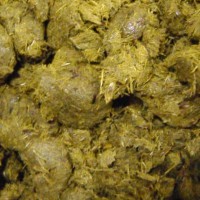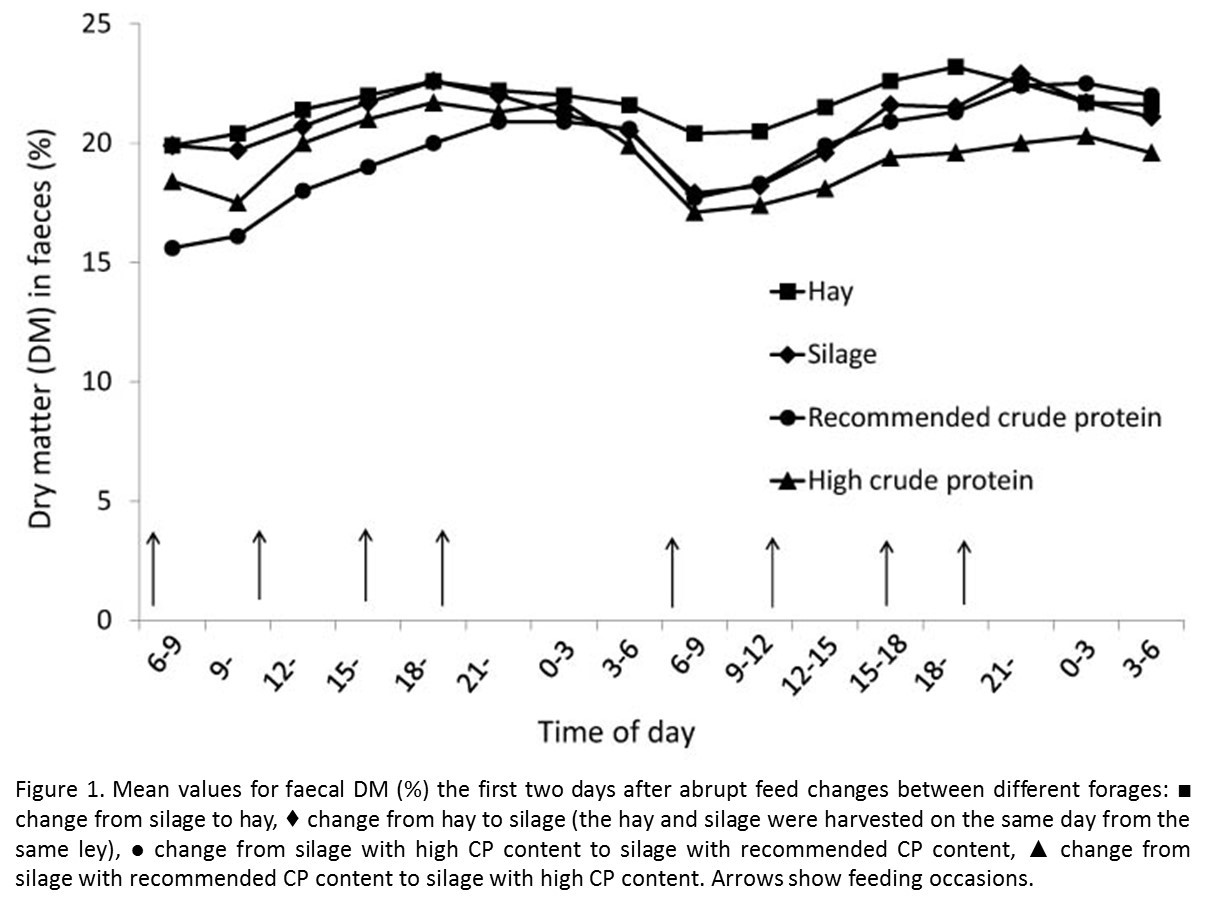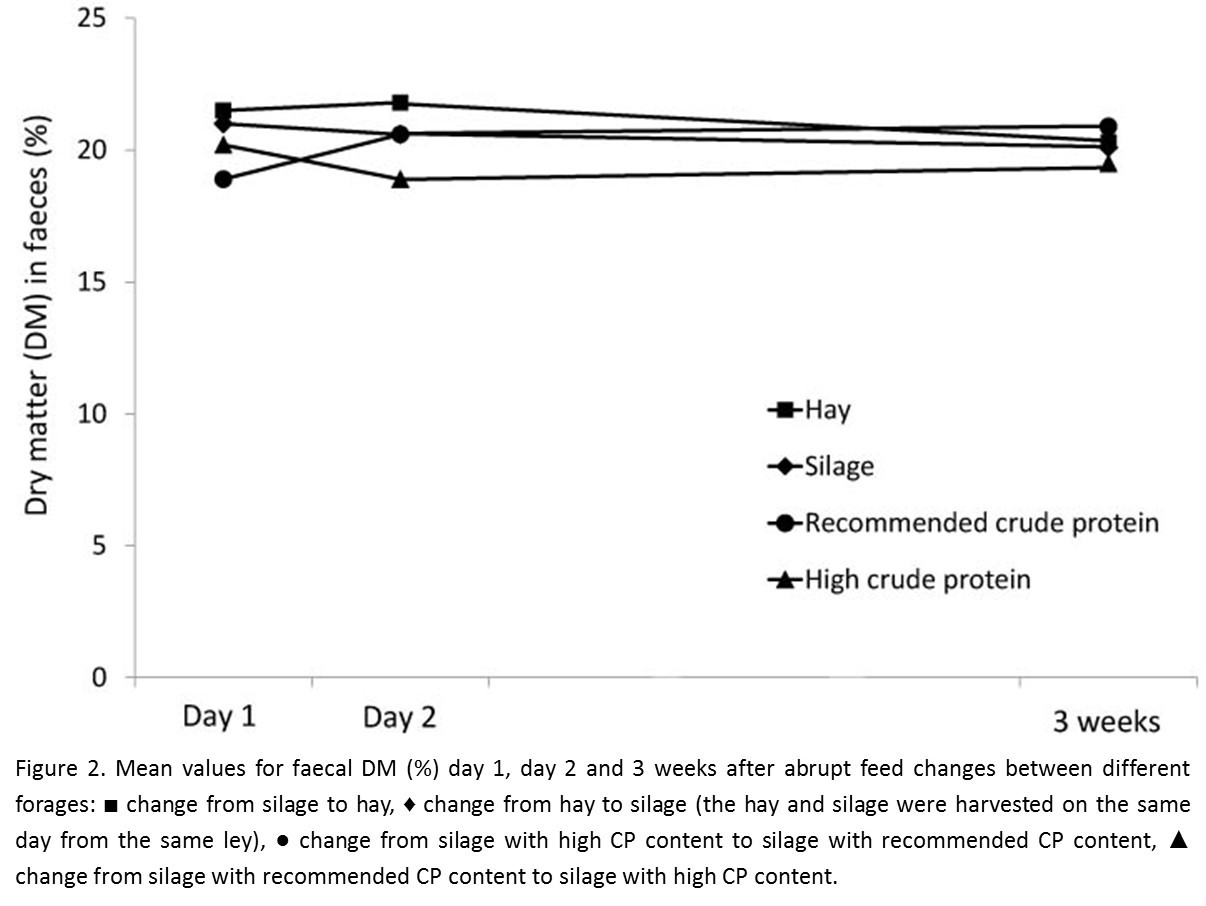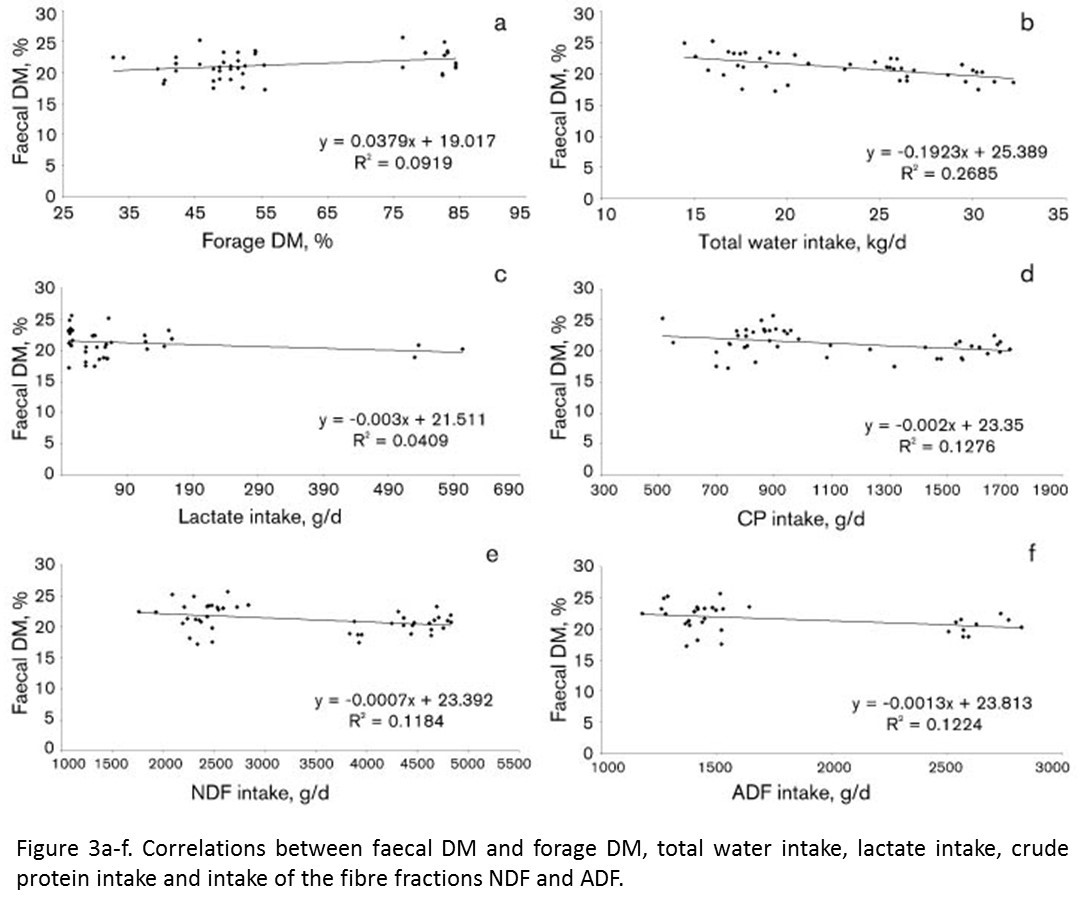Loose faeces?

In this text we take a closer look at the faecal dry matter and water content. Here the faecal dry matter (DM) is shown in %; if the faecal DM is 20% the faeces contain 80% water. So a higher DM = less water and vice versa.
Figure 1 show results from two different studies where faecal DM was analysed the first 48 hours after abrupt changes between different forages. In both studies 6 standardbred trotters in training were used. In one study abrupt feed changes between hay (82% DM) and silage (45% DM) were performed, the forages were harvested on the same day from the same ley and it was an early harvest with high energy content (11.6 MJ ME/kg DM). In the other study abrupt feed changes between forage with high crude protein content (125 g dCP/kg DM) and forage with a crude protein content (86 g dCP/kg DM) that provided a recommended intake of crude protein were performed, the forages were harvested early with a high energy content (11.7 and 11.5 MJ ME/kg DM).
The results show no dramatic changes in faecal DM but it seems as the DM concentration increases during nights. That the DM concentration increases during nighttime can be due to that the release of the hormone aldosterone is affected by the diurnal rhythm with increased plasma aldosterone concentrations during night. This implies an increased absorption of sodium and water from the large intestine and therefore drier faeces during night.
Figure 2 show a little longer perspective, it is the same studies of abrupt feed changes between different forages but mean values for day 1, day 2 and after 3 weeks of adaptation to the new forage.
In the study with changes between forages with different crude protein content there was an alteration during the first two days where the faecal DM increased after the change to forage with recommended crude protein and decreased after the change to forage with high crude protein. This change persisted also after 3 weeks of adaptation as there still was a significant difference in faecal DM between the two forage diets with different crude protein content. However, the difference was only 1.4%.
Then what is it that affects the faecal DM? Figure 3 show correlations between faecal DM concentrations and the horses’ daily intake of different fibre fractions (NDF, ADF), crude protein and lactic acid but also the total water intake and the forage DM concentration. The results are from four different forage studies with both trotters in training and sedentary horses. The better the dots align with the line the higher the correlation and R2 value (a value between 0-1), e.g. the more likely there is a linear relationship. The strongest correlation was between the faecal DM and the total water intake (Fig. 3b); the higher the water intake the lower the faecal DM. The second strongest correlation to faecal DM was with crude protein intake and the forage with high crude protein content also gave a higher water intake than the forage with recommended crude protein content. The forage diets that gave higher total water intake also had higher digestibility and implied higher nitrogen excretion and higher estimated heat production.
None of the horses in these studies had diarrhoea and after 3 weeks of adaptation to the forage diets the individual faecal DM concentrations varied between 17.4% and 25.2%. This shows that there can be a great difference between individuals. Other factors in the hindgut environment can also have an impact on the faecal DM, for example type of fibre and fibre water-holding capacity. However, hindgut digesta and faecal water-holding capacity actually does not seem to be correlated to faecal DM concentration. On the other hand, how loose or dry faeces is perceived with only the eye or when its squeezed depends on how the water is bound to the faecal dry matter and does not have to imply great differences in faecal DM concentration. Therefore the consistency of faeces can be perceived differently depending on which type of diet the horse is eating.
Sara Muhonen, AgrD



